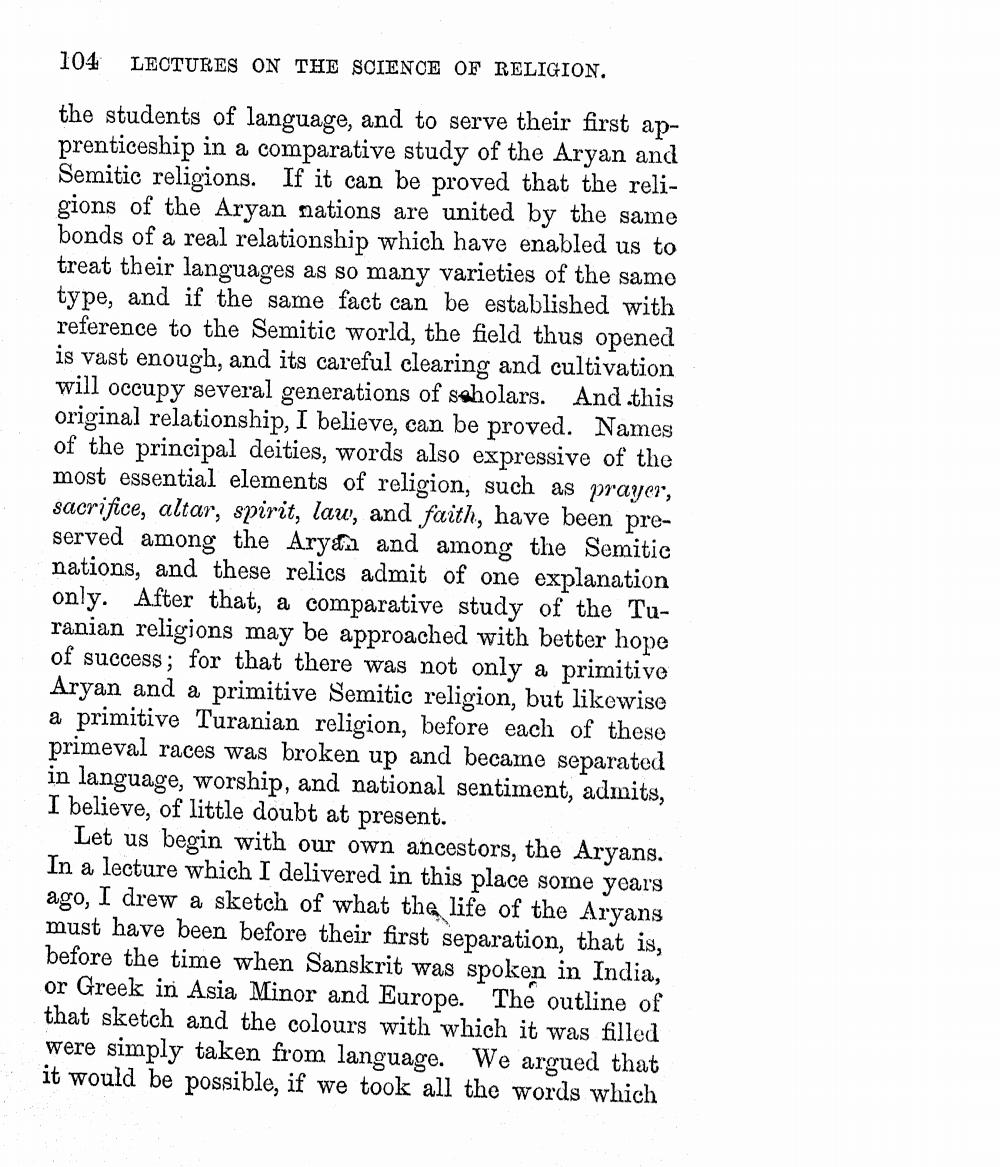________________
104
LECTURES ON THE SCIENCE OF RELIGION.
the students of language, and to serve their first apprenticeship in a comparative study of the Aryan and Semitic religions. If it can be proved that the religions of the Aryan nations are united by the same bonds of a real relationship which have enabled us to treat their languages as so many varieties of the same type, and if the same fact can be established with reference to the Semitic world, the field thus opened is vast enough, and its careful clearing and cultivation will occupy several generations of scholars. And this original relationship, I believe, can be proved. Names of the principal deities, words also expressive of the most essential elements of religion, such as prayer, sacrifice, altar, spirit, law, and faith, have been preserved among the Aryan and among the Semitic nations, and these relics admit of one explanation only. After that, a comparative study of the Turanian religions may be approached with better hope of success; for that there was not only a primitive Aryan and a primitive Semitic religion, but likewise a primitive Turanian religion, before each of these primeval races was broken up and became separated in language, worship, and national sentiment, admits, I believe, of little doubt at present.
Let us begin with our own ancestors, the Aryans. In a lecture which I delivered in this place some years ago, I drew a sketch of what the life of the Aryans must have been before their first separation, that is, before the time when Sanskrit was spoken in India, or Greek in Asia Minor and Europe. The outline of that sketch and the colours with which it was filled were simply taken from language. We argued that it would be possible, if we took all the words which




